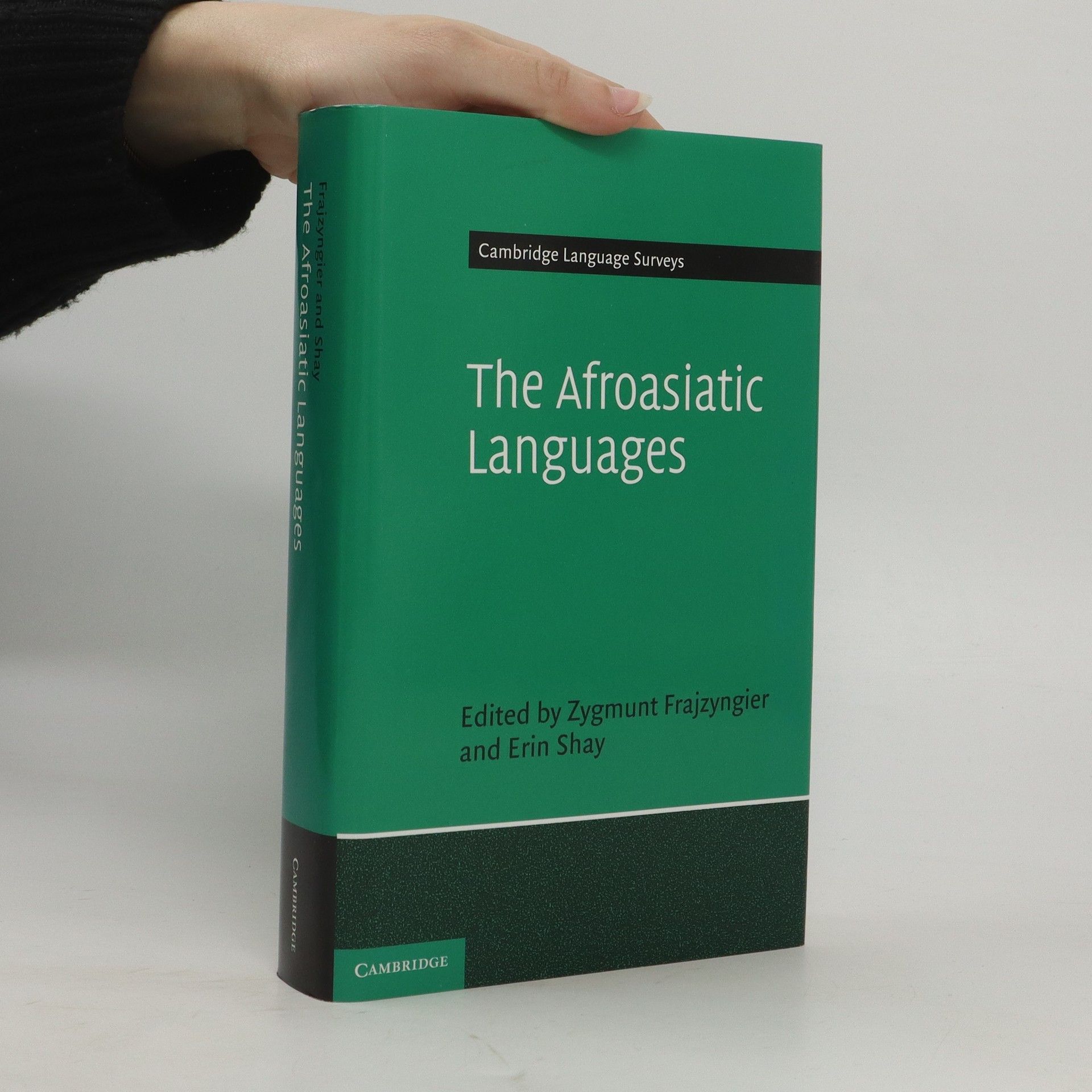Studying the grammaticalization of the complex sentence, this text discusses such topics as: paratactic and sequential constructions; functions of complementizers; complements of verbs of saying; embedded interrogatives; and complements of volitional verbs.
Zygmunt Frajzyngier Livres






A Grammar of Wandala
- 720pages
- 26 heures de lecture
Wandala is a previously undocumented Central Chadic language spoken in Northern Cameroon and Northeastern Nigeria. The Grammar of Wandala presents a non-aprioristic analysis of its phonology, morphology, syntax, and grammatical functions. Its structure significantly diverges from other Chadic languages, both in formal aspects and grammaticalized functions. This grammar substantiates hypotheses about forms and functions and is written to be accessible to linguists from various theoretical backgrounds. The phonology features a complex consonantal system, a three-vowel system, and a two-tone system. It includes numerous vowel insertion rules and a vowel harmony system, with vowel deletion marking phrase-internal positions and vowel insertion indicating phrase-final positions. These rules facilitate clause parsing into constituents. Wandala exhibits three types of verb reduplication, two of which express aspectual and modal distinctions. Notably, the negative verb paradigms differ from affirmative ones in subject coding. Pronominal affixes and an extensive system of verbal extensions illustrate grammatical and semantic relations within clauses. Uniquely, in a pragmatically neutral verbal clause, there is only one nominal argument, either the subject or the object, which can follow various constituents. The grammatical role of this argument is indicated by inflectional markers on the verb and the preceding morphemes, with diffe
A grammar of Gidar
- 504pages
- 18 heures de lecture
This reference grammar of Gidar, spoken in the Northern Province of Cameroon by some 40.000 people, contains hypotheses on the forms and functions of its linguistic structures and supporting argumentation and evidence. The language belongs to the Central Branch of Chadic languages, but its phonology, morphology, and syntax differ significantly from those of related Chadic languages and include rare or hitherto unobserved phenomena. Gidar has fronting and rounding long distance vowel assimilations that operate to the left and the right of the triggering vowel. Some prepositional phrases are incorporated within the verbal piece framed by aspectual markers. There are two tense and aspectual systems. The focus on the verb requires the formation of a special phrase whose head is an infinitive form of the verb with its object.
The present study examines a distinct language structure built around categories that have been ignored until recently by linguistic theories. One of these is the category 'point of view' of the subject. The other category is 'goal', coding the presence of the goal of the predicate. This study demonstrates that the two categories play a fundamental role in the grammar of Hausa, a West Chadic language. They determine the way arguments are coded, the form of the predicate, the semantic interpretation of the clause, and the interpretation of the semantic roles of the noun phrases occurring in the clause. The presence of the first categories has created the motivation of yet another catogory, the coding of the presence of the affected object. This study demonstrates that, in some languages the coding of the point of view takes precedence of the coding of grammatical or semantic relations. The implication of this study is that structures of various languages may be organized around different functional domains having different hierarchical structures.
The series builds an extensive collection of high quality descriptions of languages around the world. Each volume offers a comprehensive grammatical description of a single language together with fully analyzed sample texts and, if appropriate, a word list and other relevant information which is available on the language in question. There are no restrictions as to language family or area, and although special attention is paid to hitherto undescribed languages, new and valuable treatments of better known languages are also included. No theoretical model is imposed on the authors; the only criterion is a high standard of scientific quality.
Afroasiatic languages are spoken by some 300 million people in Northern, Central and Eastern Africa and the Middle East. This book is the first typological study of these languages, which are comprised of around 375 living and extinct varieties. They are an important object of study because of their typological diversity in the areas of phonology (some have tone; others do not), morphology (some have extensive inflectional systems; others do not), position of the verb in the clause (some are verb-initial, some are verb-medial, and some are verb-final) and in the semantic functions they encode. This book documents this typological diversity and the typological similarities across the languages and includes information on endangered and little-known languages. Requiring no previous knowledge of the specific language families, it will be welcomed by linguists interested in linguistic theory, typology, historical linguistics and endangered languages, as well as scholars of Africa and the Middle East.
Praca opisuje cechy strukturalne różnych języków. Nie zawiera jednak analizy konkretnego języka ani nie odwołuje się do uniwersalizmu relacji gramatycznych wszystkich języków. Mówi o swoistym sposobie kodowania informacji gramatycznej, wypracowanej przez każdy język odrębnie. Przy takich założeniach metodologia opisu struktur językowych opiera się na koncepcji domen funkcjonalnych, w ramach których dokonuje się wybór środków kodowania i wykształcają się wzajemne relacje między reprezentacją podsystemów struktury gramatycznej języka. Publikacja przeznaczona jest dla czytelników zainteresowanych językoznawstwem, ale nieprzywiązanych dogmatycznie do konkretnej teorii czy tradycji językoznawczej. Zachęca do eksperymentowania ze strukturami różnych języków, w tym także ze strukturami języka polskiego, do poszukiwania ich wspólnych cech, do badania relacji wynikających z kodowania domen.
